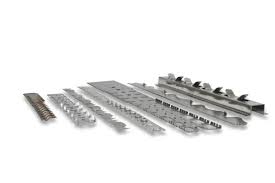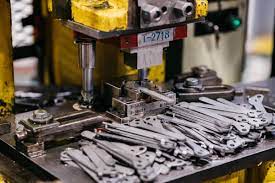In the ever-evolving landscape of materials science, alloys stand tall as versatile elements, offering an extensive spectrum of applications across industries. These compounds, formed by amalgamating two or more metallic elements, boast unique properties that often surpass those of their constituents. From enhancing structural integrity to optimizing functionality, alloys play an indispensable role in shaping our modern world.
Cracking the Code of Alloys: Composition and Fusion Process
An alloy represents a fusion of metals or a blend of a metal with other elements. Crafted through the melting and blending of multiple elements, these compounds create a homogenous substance. The resulting material showcases distinctive traits, often surpassing those of its base metals, owing to altered atomic structures and enhanced attributes such as strength, resilience, and corrosion resistance.



Alloys in Action: Multifaceted Industry Applications
Alloys permeate diverse industries with their versatile applications. In aerospace engineering, the preference for lightweight yet robust alloys like aluminum-titanium blends endures for crafting aircraft components due to their exceptional strength-to-weight ratio. Similarly, in automotive manufacturing, steel alloys play a pivotal role in creating durable yet lightweight parts, significantly contributing to both fuel efficiency and safety.
Moreover, alloys find extensive usage in the medical sector for implants and prosthetics, leveraging materials like stainless steel and titanium blends for their biocompatibility and strength. Additionally, in electronics, copper-based alloys ensure efficient conductivity and resistance to corrosion.
Advantages of Alloys: Tailored Solutions for Varied Needs
Leveraging alloys presents an array of advantages. Their customized properties cater to specific requirements, enhancing product performance and durability. Alloys exhibit heightened mechanical strength, resistance to corrosion, ductility, and conductivity, making them adaptable to various environments and applications.
Furthermore, alloys often provide cost-effective solutions by combining desirable attributes from different metals, reducing the reliance on pricier materials while achieving superior performance.
Alloys and Geocomposites: Strengthening Foundations
Geocomposites, engineered materials for civil and environmental applications, frequently integrate alloys to fortify their structural integrity. Alloys, especially those fortified with durability and corrosion resistance, intertwine within geocomposite materials to reinforce geotechnical and construction projects. These alloys fortify the geocomposite fabric, enabling it to endure harsh conditions and provide stability in various civil engineering applications like roads, landfills, and drainage systems.
In conclusion, alloys symbolize human ingenuity, offering a broad array of properties and applications across multiple sectors. Their integration into geocomposites extends their utility, significantly contributing to global infrastructure advancement and engineering solutions. As technology progresses, the adaptability and versatility of alloys continue to propel innovation, shaping a future where their influence remains unmatched.
Tags: 17 alloy wheels, alloy plates farm, magnet alloy, rog alloy price, what color is alloy